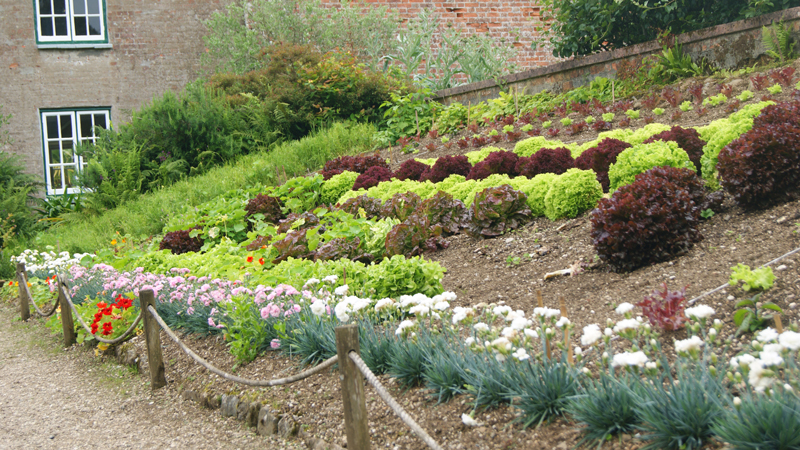This is the time of year to start designing your kitchen garden, whether you’re expanding or improving an existing veg patch or starting from scratch. It’s best to start this process now as it gives you a little time to get together any materials you might need (planters, raised beds, wood chip or bricks for pathways etc) ready to start building it over the next few weeks before you plant in the spring.
Drawing a simple bird’s eye view sketch can really help and it doesn’t necessarily need to be to scale (if you do want to do a scaled design we’d recommend getting some graph paper to make the job a little easier!) Try to detail where you will be putting new growing space (whether this is in pots/containers, borders, raised beds) where you will have walkways/paths and what you will be planting where. Don’t forget to include a toolshed and compost bin if you have a big veg patch as you don’t want to be heaving things from one end of the garden to the other all the time.
If you’re not someone who works well with paper designs, you could also use rope or long lengths of wood laid out in the garden itself so that it’s easier to visualise where you’re putting new beds etc.
You’ll find lots of inspiration on our pinterest page for kitchen garden designs with ideas for geometrical garden layouts, formal and informal layouts, completely higgledy-piggledy layouts as well as simple ways to grow your own in small spaces.
Possibly the most important thing we have to say on this is that there is no right or wrong way to design your kitchen garden. There is often a tendency for people to assume that they need 4 or 5 big raised beds all neatly arranged in a geometrical fashion, but this isn’t the case. Assess your space and design your veg patch accordingly. Here are a few quick ideas:
If you have a patio garden:
- Get a simple veg planter and you can grow plenty of salads, leaves and herbs without taking up too much space.
- You can grow a significant amount of veg in pots and containers, just make sure they are nice and deep so that there’s space for the roots.
- Grow bags can be very useful.
- Think about a simple square foot/square metre bed with a trellis at the back – you can grow quite a lot in one of these.
If you have a small back garden:
- Quite often terraced houses have a rectangular shaped back garden with grass and a couple of borders. There’s nothing to stop you dedicating some (or all) of the space in the borders to growing veg and herbs.
- It’s easy enough to add some pots and containers for veg.
- Be creative – you could even make an old wheelbarrow into a veg plot by drilling some holes in the bottom for drainage. The beauty of this is that you can move it around.
- You could turn your whole garden into a beautiful cottage-garden inspired potager with lots of flowers for cutting as well. This would really maximise space.
- Growing things vertically is a great space saver.
If you have a nice, big lawn that you don’t want to ruin:
- Make a feature out of your veg patch – you could put quite a nice circular patch in the centre of the lawn or something like that.
- You don’t have to put in raised beds, you can just dig whatever shaped bed you like into the lawn which wouldn’t interfere too much with the general look and feel of the lawn garden.
If you have an allotment or a big garden:
- Be as creative as you like – you can get loads of inspiration from neighbouring allotments, pinterest and friends’ gardens.
- Upcycling is a great way of keeping costs down in the first year – use old wheelbarrows for strawberries, old tyres for potatoes, or even old kettles and saucepans to grow herbs in. You can often find wood and glass doors going free/cheap at local junk yards if you want to build raised beds or greenhouses.
- Have a think about what you want to grow before designing beds etc, as it may dictate how many beds you put in. For example, you may wish to grow a bit of everything in which case putting four or five beds in to allow for easy crop rotation is a good idea.
- Consider a greenhouse/polytunnel.

